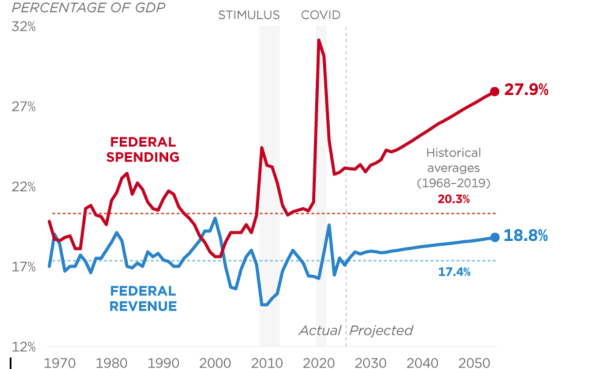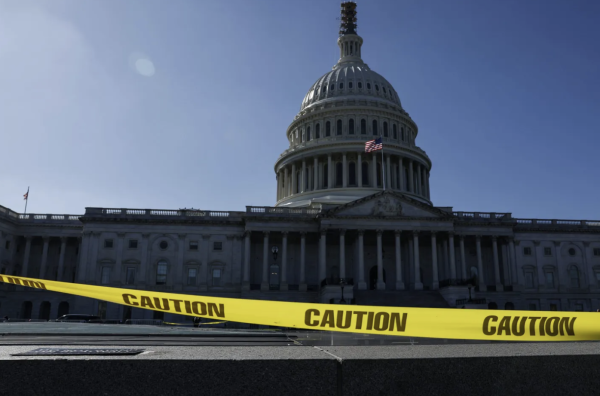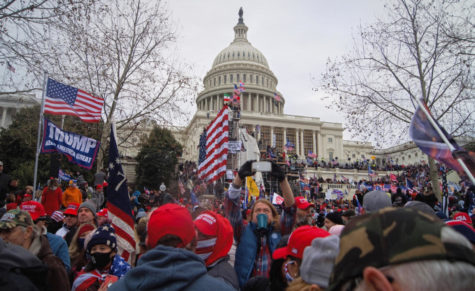The State of the Union
“Madam Speaker, Mr. Vice President, Members of Congress, the First Lady of the United States, and my fellow Americans,” President Donald J. Trump’s voice resonated across the house chamber. On February 5th, the 45th president of the United States delivered his second State of the Union address, at a time when America remains fiercely divided between party lines.
The first State of the Union Address was given on January 8th, 1790, by George Washington, and is traditionally given every year by the President with few exceptions. Article II, Section 3 of the United States Constitution outlines the guidelines for the State of the Union.
“[The President] shall from time to time give to the Congress Information of the State of the Union and recommend to their Consideration such Measures as he shall judge necessary and expedient.”
These words have been interpreted over the years to mean many different things – several presidents have opted to submit their speeches in writing, but since Woodrow Wilson addressed Congress in 1913, speeches not delivered in front of Congress have become rare.
Originally slated to speak on January 29th, the president was uninvited from the house chamber for the first time in history by Democratic Speaker Nancy Pelosi, because lawmakers could not reach a deal to reopen the government. Deciding to garner funding for essential border security in other negotiations, Trump signed a bill to reopen the government and was able to give his speech to a joint session of congress, albeit a few days later.
Since 2019 is the 75th anniversary of D-Day and the 50th of the moon landing, President Trump invited and recognized several American heroes including astronaut Buzz Aldrin and three D-Day veterans.
In this year’s address, President Trump preached a message of unity. Before he began to list his accomplishments, he asked Congress to govern “not as two parties, but as one nation.”
“The agenda I will lay out this evening is not a Republican agenda or a Democrat agenda. It is the agenda of the American people.”
Young Democrats Advisor John Monahan believes that the speech was pretty typical of a president, but that it became a political tool used by both parties.
“The speech became sort of a political football between him and Nancy Pelosi.”
From the outset, President Trump focused the majority of his speech on the highlights of his first two years, emphasizing the economic prosperity of the nation.
Trump stated that since his inauguration, the US economy has added 5.3 million new jobs; in the last year alone, just under 600,000 manufacturing jobs have been created, the highest annual rate since World War II. Overall unemployment is hovering around four percent, which among economists is recognized as full employment and is the lowest in over 50 years. According to Trump, African American, Hispanic American, Asian American, and disabled American unemployment has reached the lowest levels ever recorded.
He emphasized that the broadest measure of economic growth, GDP, is growing at twice the rate that it was when he assumed the presidency in 2016 and he stated that as a by-product over 5 million Americans have been lifted off food stamps. Trump also heralded the Tax Act of 2017, which significantly reducing the tax rate for small businesses.
Senior Will Wallace reacted positively to many of Trump’s policies, especially his Tax Act.
“He emphasized his tax cuts, it stimulated the economy pretty well, you have a lot of record low unemployment, we’ve seen record highs in the stock market” he said.
Junior Henry Rosenblath downplayed Trump’s responsibility for the strong economy and believes that not all credit should be given to the President.
“I thought that he did a good job speaking to his base. He took a lot of credit for economic prosperity – the US is no doubt prospering but I’m not sure Donald Trump is even in part responsible for that prosperity” said Rosenblath.
President Trump dedicated the remainder of his address to foreign policy. He discussed his administration’s recently imposed tariffs on 250 billion dollars of Chinese goods and its more favorable trade deal with Mexico and Canada to replace NAFTA.
Trump emphasized that his hard-line approach to national defense has worked; he credited his criticism of NATO with a 100-billion-dollar defense spending increase by our NATO allies overseas, and with the start of work on a new missile defense system for the continental United States and surrounding islands. This year’s budget comes with a 16 billion dollar increase in military spending (previously 700 billion total), as he pursues his stated goal of maintaining the U.S. military’s posture as the dominant force in the world.
Trump attributed the fact that the North Korean regime has not launched a missile test or detonated a bomb for fifteen months to his aggressive stance on North Korea’s nuclear weapons program.
The speech evoked strong reactions on both sides of the aisle and at many points, Trump and his political opposition exchanged both nuanced and blunt messages to each other.
“America will never be a socialist nation,” said Trump.
His comment spurred emotional cheers from some and visible rebukes from others, particularly many Democratic Senators who have declared their candidacy for President in 2020. Trump praised the newly elected female members of the Congress, eliciting a standing ovation among all present despite the tradition of the opposing party remaining seated and silent.
“Listening to his speech, whether we are pro or against Trump, it’s clear that he delivered a message meant to be hopeful, patriotic and inclusive. A President’s end goal is to take care of a nation, all of us…not separate entities or groups. As such, whether a Democrat or Republican holds the office of President of the United States, we need to keep in mind that in one way or another we ALL benefit from the successes of our nation. At least on those grounds, let’s all stand together for our nation’s incredibly low unemployment and the bull market we are currently experiencing!”
However, Monahan believes that people read too much from the lack of applause.
“Professional politicians can sense the dog whistling, and they don’t always want to clap for something they feel is leading in the wrong direction. I don’t make much of them not clapping other than that.”
Notwithstanding of politics and what your policies are, Kelly believes that a certain amount of respect is owed.
“In this great nation we all have a right to our own political opinions and we also have the freedom to express them. But if we choose not to acknowledge a President’s accomplishments such as the lowest unemployment rate ever, regardless of what party he represents, then what that suggests is that we’re not open to the opposing party having any success, regardless of what that might be. How much can a nation grow when we’re all pulling in different directions?”
It is customary for the opposing party to give a response directly after the State of the Union, and this year’s response was given by defeated Georgia Democratic gubernatorial candidate Stacey Abrams. Abrams, rather than confront President Trump directly, preached unity between party lines in order to ensure a strong and diverse America, even in the hardest of times.
“Even as I am very disappointed by the president’s approach to our problems, I still don’t want him to fail,” said Abrams. “America wins by fighting for our shared values… That is who we are, and when we do so, never wavering, the State of the Union will always be strong.”
“Was it a response? Not really. She shifted the focus to things that were less controversial. She took advantage of the national spotlight to frame herself in a popular light” said Monahan.
While the feedback to her response was mostly positive, some people thought it was self-centered and almost preparation for a future campaign.
“The point is to talk about the country, do a bit of goal setting, and it seemed like she was talking about herself a lot, advertising herself for the future,” said Wallace.
In his conclusion, Trump asked the nation a simple question.
“What will we do with this moment? How will we be remembered? We must choose whether we are defined by our differences — or whether we dare to transcend them. No matter the trials we face, no matter the challenges to come, we must go forward together. We must keep America first in our hearts. We must keep freedom alive in our souls. And we must always keep faith in America’s destiny — that one Nation, under God, must be the hope and the promise and the light and the glory among all the nations of the world.”






